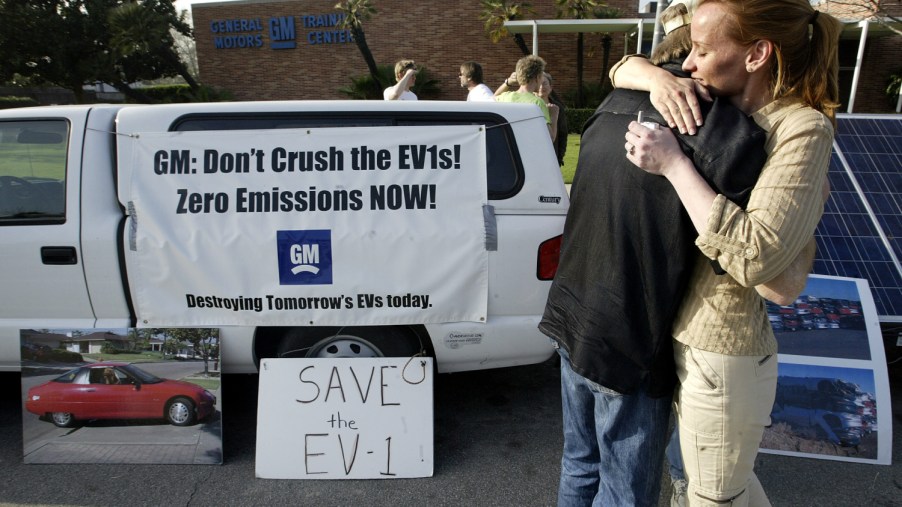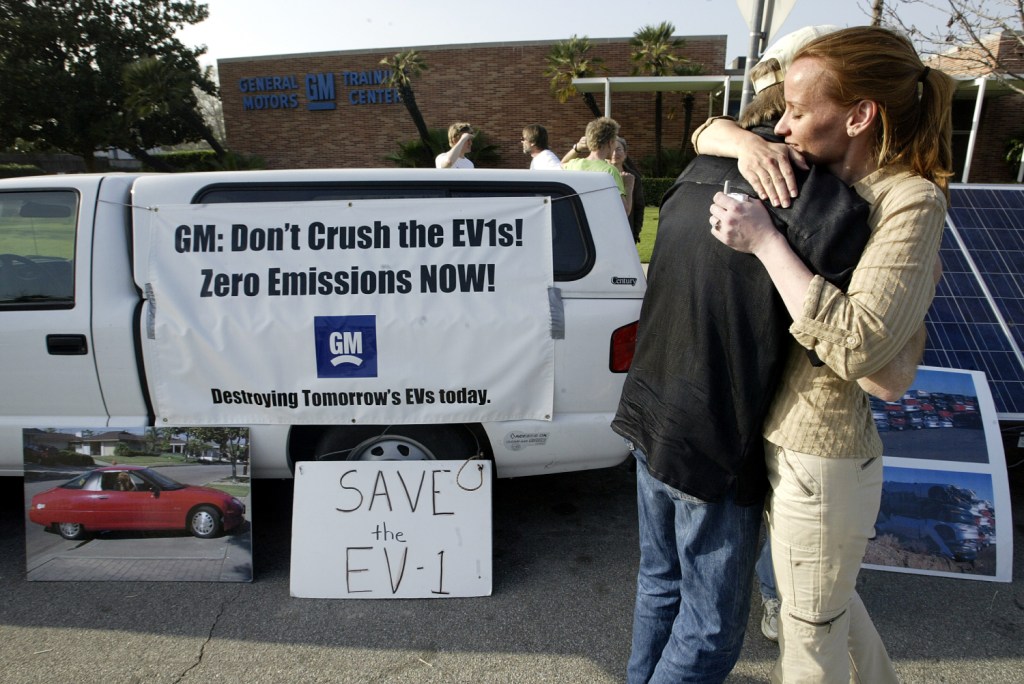
What Is the GM EV1 and Why Does It Matter?
Have you ever heard of the 1996 GM EV1? It was one of the first mass-produced electric vehicles on the market, though it never really took off. As the world is now, GM was about 20 years ahead of the EV game. In other words, General Motors could have been the electric vehicle king by now.
What does EV1 stand for?

EV1 stands for Electrical Vehicle 1 or Electric Vehicle number one. Since it was the first EV actually built from the ground up to be an electric vehicle, the name makes sense.
Kenneth Baker, an engineer for GM, was also a part of the Chevy Electrovette program. The Electrovair was developed as a conversion of the Chevrolet Corvair car in 1964. According to the GM Heritage Center, the Electrovair had the usual engine and transmission replaced with electric components.
These components included a 90 horsepower AC induction motor and a 450V battery. In 1966, the Electrovair I offered 115 horsepower and a 532 V battery. It had a top speed of 80 miles an hour and got anywhere from 40 to 80 miles.
Similarly, the Chevy converted the Chevette was into an electric vehicle. This EV had a nickel-zinc battery that helped launch GM to focus on battery technology as the years went on. The brand worked on improving EV range and performance with the batteries.
By 1997, this became the EV1.
GM took the electric vehicle to the moon
GM used this technology to help design the electric moon rover for the Apollo 15 mission. The Smithsonian National Air and Space Museum has all of the information about the lunar roving vehicle (LRV).
It wasn’t just General Motors that helped, though. The Boeing Co., Aerospace Group worked along with Delco Electronics Division, a part of GM at the time.
“Each wheel was individually powered by a quarter-horsepower electric motor (providing a total of one horsepower) and the vehicle’s top speed was about eight miles per hour (13 km/hr) on a relatively smooth surface.”
Smithsonian National Air and Space Museum
Also, the LRV had two 36V batteries providing power. It has two separate steering systems. For instance, should one fail, the other could operate the vehicle in its place. Convenient, right? There are not many ways to repair a vehicle on the moon.
What killed the electric car?
For the most part, GM was just too far ahead of the game. After that, the EV1 was released to drivers on a limited-release program in a few areas. Residents in LA, California, Phoenix, and Tucson, Arizona were some of the lucky few.
According to Wikipedia, GM called this a “real-world engineering evaluation” and claimed drivers were participating in a marketing study. To repair the cars, the EV1 had to be taken to a local Saturn dealership.
In conclusion, GM thought the electric vehicle market was an unprofitable and “niche” market. Drivers enjoyed the cars, but GM did not continue the project. Eventually, the company recalled the vehicle and crushed the cars unceremoniously in the Arizona desert.
Most of the vehicles were crushed or sent to museums for educational purposes by 2002. However, the Smithsonian has one at the museum currently.
The movie What killed the electric car? might be worth a watch. After all, the EV game is back and bigger than ever.



